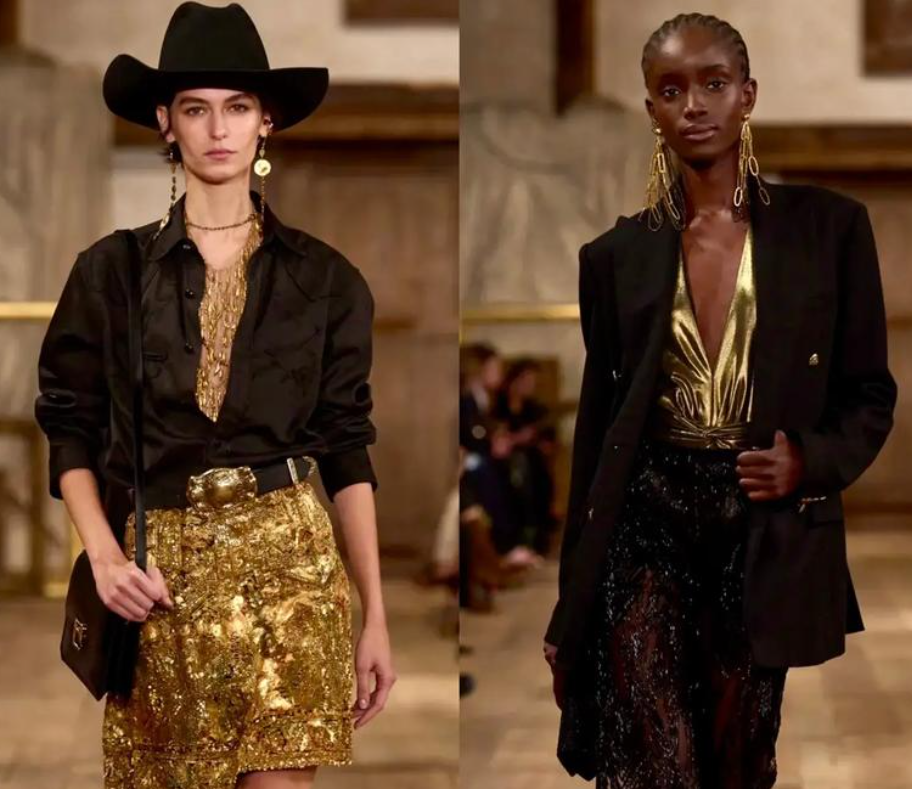
With the rise of vegan leather, a new generation of eco-friendly alternatives is poised to disrupt the industry. We asked the experts for details...
Leather has long been the bedrock of the luxury industry, bringing in an estimated $400 billion a year, but is it starting to lose its luster? Growing ethical and environmental concerns have undoubtedly contributed to the rise of vegan leather in recent years. With many major brands moving away from fur (including Chanel, Burberry, Gucci and Prada), as well as exotic animal skins, experts believe that cowhide may be next on the list.
It's no secret that the cattle industry is bad for the planet - it's responsible for an estimated 14.5 percent of global greenhouse gas emissions each year. While leather is often thought of as a by-product or waste material produced by the industry, critics argue that the material is also an intrinsic part of the business model.
It's not just its carbon footprint that's worrying: the tanning process - the treatment of animal skin to produce leather - is also highly polluting. It is estimated that 80 to 90 percent of leather is treated with chromium; Chromium is a toxic chemical that, if not handled properly, can contaminate waterways and harm the health of the workers involved.
Currently, most vegan leather is made from polyurethane (a plastic derived from fossil fuels), which of course has its own environmental problems. Plant-based alternatives, such as Pinatex, or pineapple peel, do exist, but lab-grown leather is aiming to disrupt the industry.
"In a situation where we want to get rid of animal products on the one hand and chemicals on the other, you really need to bring in this third category," said Andras Forgacs, chief executive of Modern Meadow, a company that makes animal-free materials.
What is lab-grown leather?
While the term "lab-grown" may conjecture images of a group of scientists around a petri dish, the technology is now far beyond that (the scale required means it's not actually grown in a lab).
But as the name suggests, lab-grown leather does come from a process perfected by scientists. By starting at the molecular level, the properties of the final product are easier to manipulate.
Bolt Threads' Mylo material is one of the most promising lab-grown leathers on the market.
The process involves growing fungal cells into mycelium, or mushroom roots, and feeding them sawdust, which produces large, fluffy, foam-like masses that are then processed and dyed to turn into leather-like material.
"When you touch our material, it feels like natural leather," said Jamie Bainbridge, vice president of product development at Bolt Threads. "If no one tells you up front if it's leather, you're sitting there trying to figure out if it's leather."
Meanwhile, one of Modern Meadow's processes involves growing collagen, the main protein found in leather, through fermentation. For now, though, the company is using plant-based proteins - similar to collagen - to make its first leather replacement, which is about to hit the market.
"It's about using the fundamental building blocks of nature to make materials and develop new functions and properties," Forgacs explains.
Similarly, a process found in nature that helped create Newlight's AirCarbon material is surprisingly carbon-negative, meaning it absorbs more carbon dioxide than it emits.
"We found that microbes in the ocean use methane and carbon dioxide to make this very beautiful molecule inside their cells," says Herrema, "and it took us about a decade to learn how to replicate this process on land and turn this material we made into an alternative to leather."
Expand the scale of technology
Now that the technology is available, the next challenge is to scale up the production of lab-grown leather. On a hopeful note, Mylo has already won the backing of a consortium of brands including Stella McCartney, Kering, Adidas and Lululemon, with the first products made with the material due to go on sale next year.
"This brand alliance is incredibly important," said Bolt Threads CEO Dan Widmaier. "It's more powerful than one brand alone; The fact that we had to come together and not fight over it, but work together to bring it to market, was pretty visionary."
To mass-produce mycelium, Bolt Threads is working with a mushroom producer in the Netherlands that has state-of-the-art indoor farming facilities. But for all these lab-grown alternatives, there are clearly hurdles to overcome.
For example, because the Mylo manufacturing process still includes tanning, the company will have to find more tanneries that can meet its high environmental requirements. "We will never be perfect, we will always try to improve," Widmaier said.
However, the support of major brands (in addition to those already in the alliance) is still crucial to the company's mission to replace the traditional cowhide used in the industry.
"As we scale up, we can serve more partners and at the same time bring the price point down to a point that is acceptable to everyone," he added.
Look to the future
Bringing the first lab-grown leather product to market is a big step. But are these alternatives really the future of fashion?
"Like any truly disruptive innovation, it takes a while for the industry to embrace it in a big way," Bainbridge said. "But the demand signal is huge right now, and I don't see it diminishing."
Given that concern for the environment is only going to grow, the future prospects for materials that not only have less impact but can actually benefit the planet are of great importance.
"Our goal is to shift the paradigm so that, over time, fashion can actually be a force for good," Herrema said.
Will we be able to wear lab-grown leather jackets in the next few years? Given its sustainability credentials, and its extraordinary ability to copy traditional leather, this looks likely.

